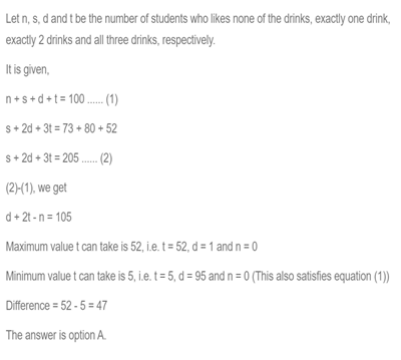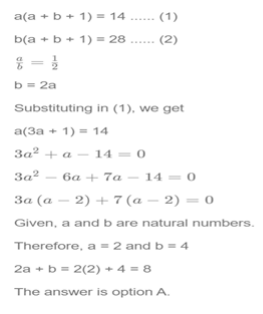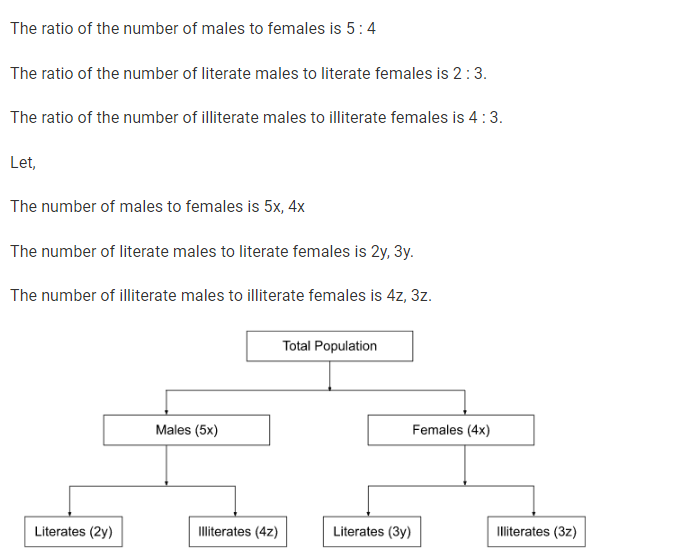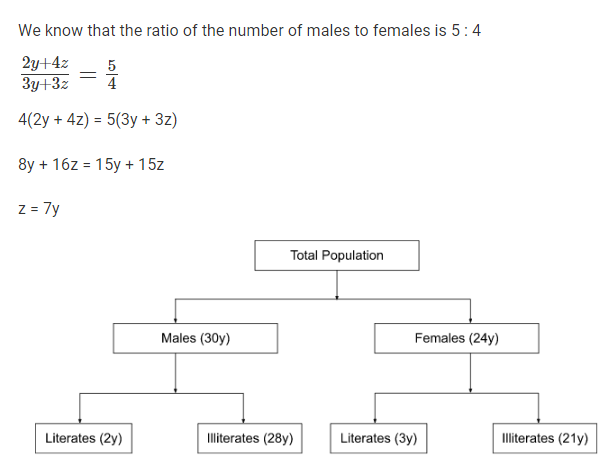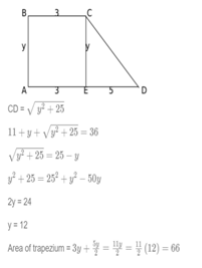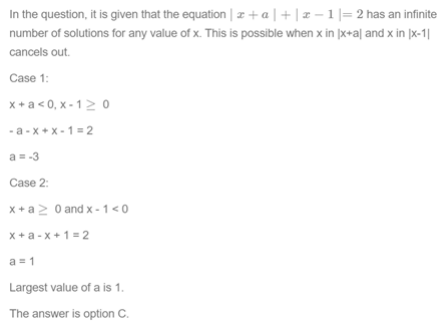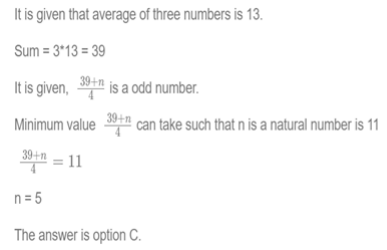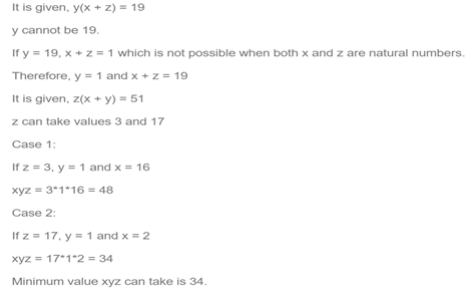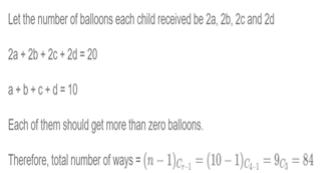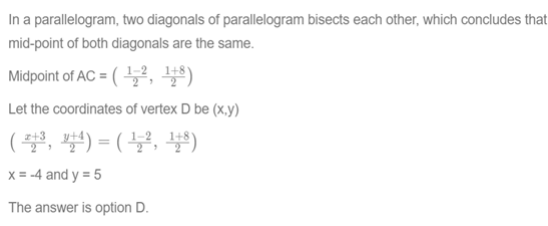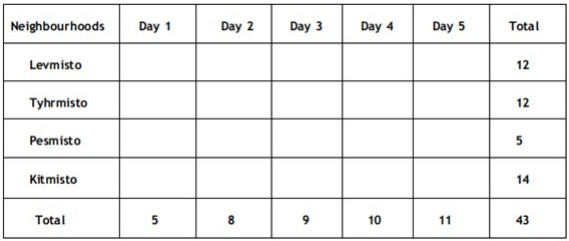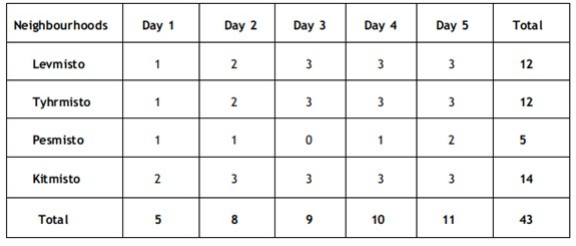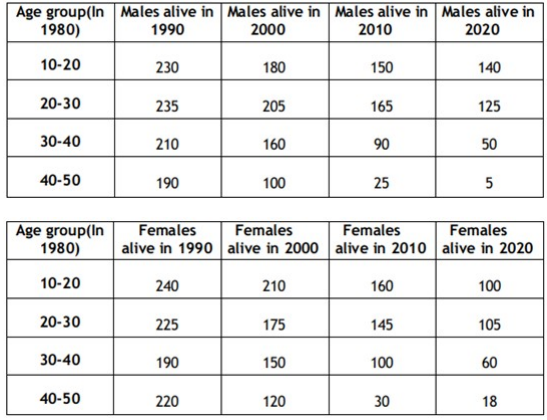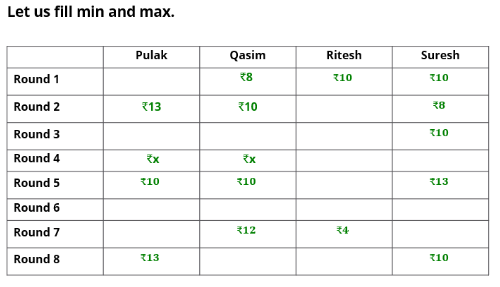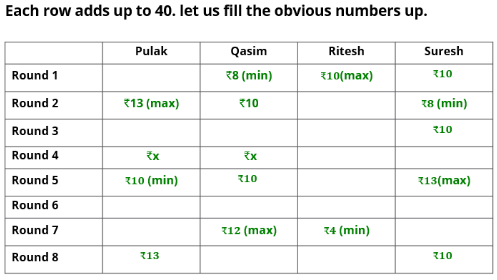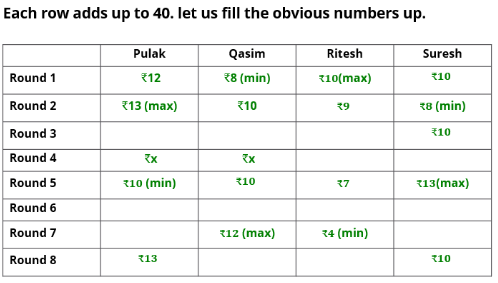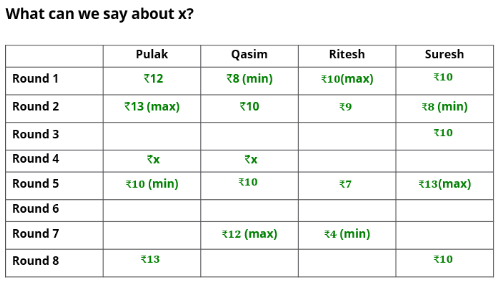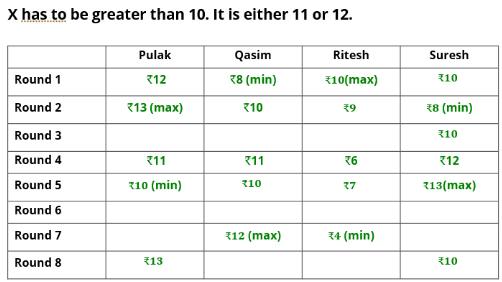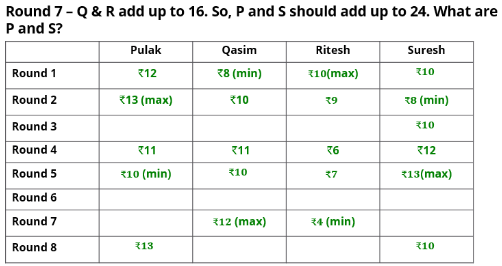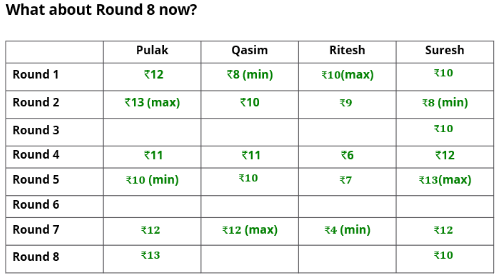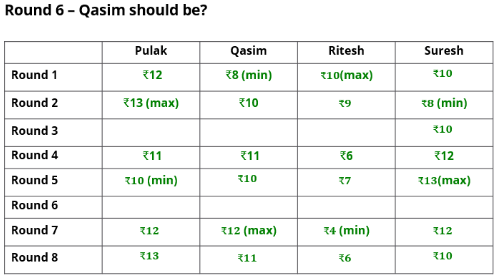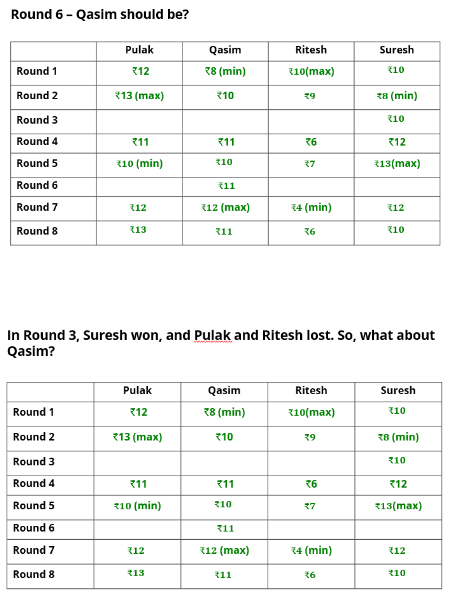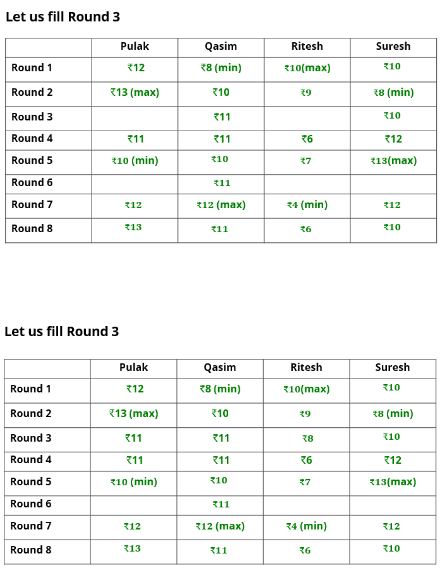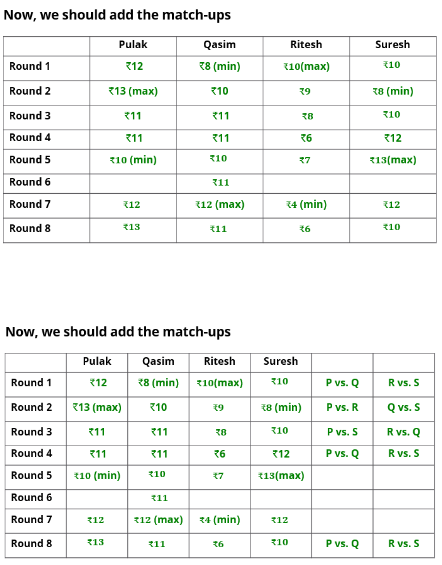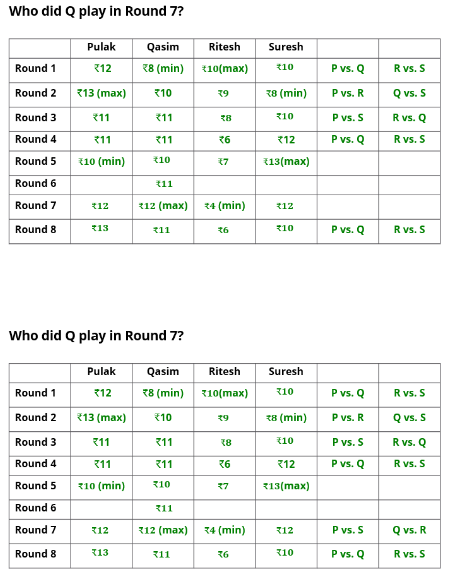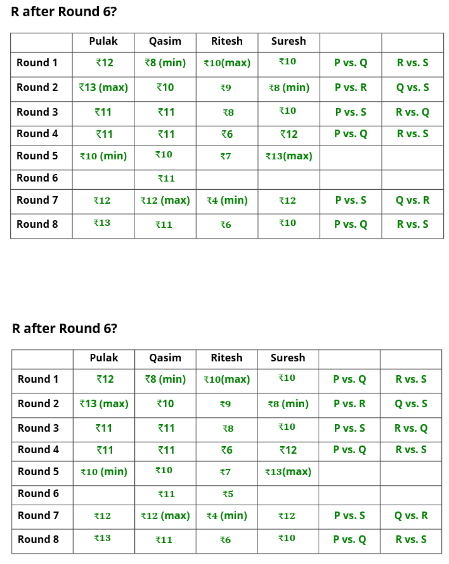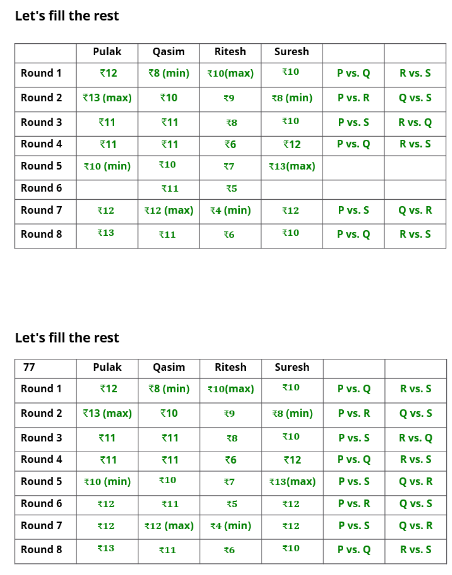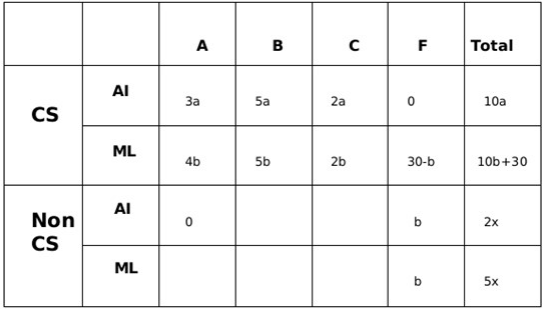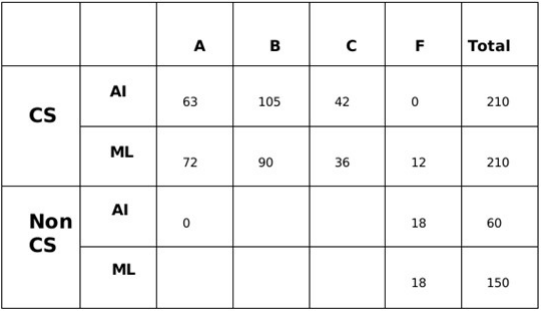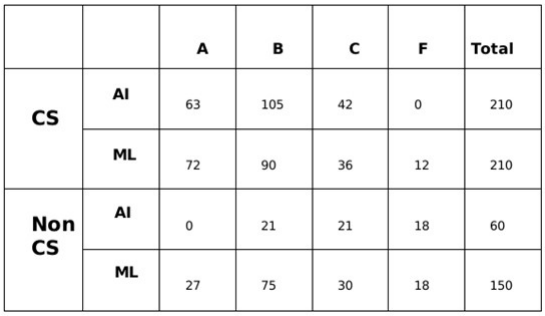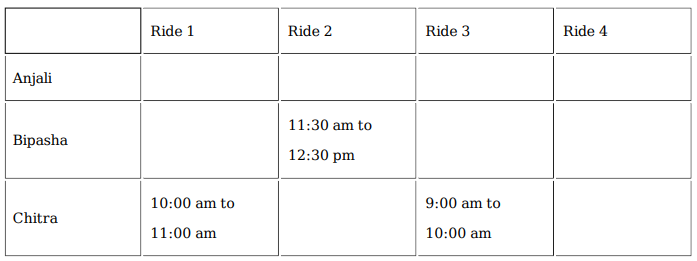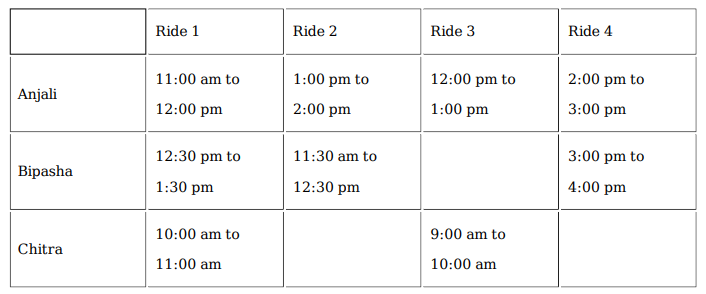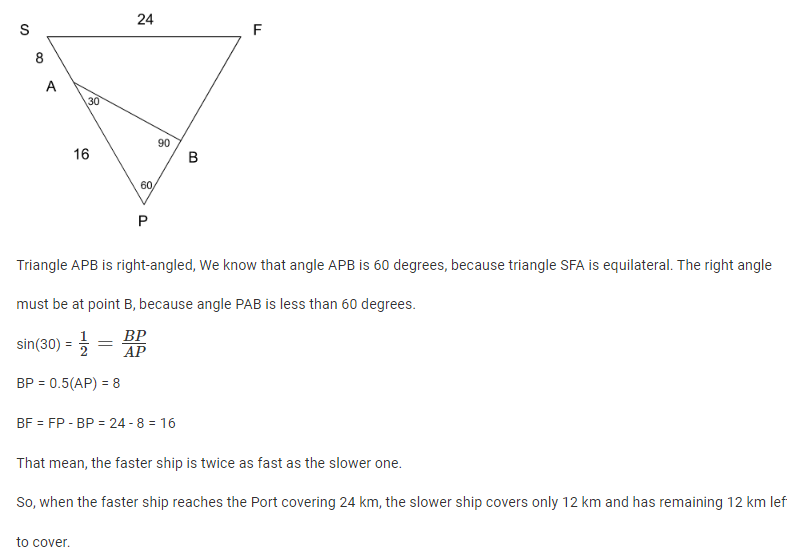Live Updates
• CATKing has launched new chat bot.

• New video on Logs has been released.
13.2K
Learners
asked the doubt

Previous Year Questions
In a class of 100 students, 73 like coffee, 80 like tea and 52 like lemonade. It may be possible that some students do not like any of these three drinks. Then the difference between the maximum and minimum possible number of students who like all the three drinks is
Video Explanation

Alex invested his savings in two parts. The simple interest earned on the first part at 15% per annum for 4 years is the same as the simple interest earned on the second part at 12% per annum for 3 years. Then, the percentage of his savings invested in the first part is
Video Explanation

The largest real value of a for which the equation |x+a|+|x−1|=2 has an infinite number of solutions for x is
Video Explanation

The average of three integers is 13 . When a natural number n is included, the average of these four integers remains an odd integer. The minimum possible value of n is
Video Explanation

Trains A and B start traveling at the same time towards each other with constant speeds from stations X and Y, respectively. Train A reaches station Y in 10 minutes while train B takes 9 minutes to reach station X after meeting train A. Then the total time taken, in minutes, by train B to travel from station Y to station X is
Video Explanation

Let ABCD be a parallelogram such that the coordinates of its three vertices A, B, C are (1, 1), (3, 4) and (−2, 8), respectively. Then, the coordinates of the vertex D are
Video Explanation

Read the following information carefully, analyze it, and answer the question based on it.
There are only four neighbourhoods in a city - Levmisto, Tyhrmisto, Pesmisto and Kitmisto. During the onset of a pandemic, the number of new cases of a disease in each of these neighbourhoods was recorded over a period of five days. On each day, the number of new cases recorded in any of the neighbourhoods was either 0, 1, 2 or 3.
The following facts are also known:
1. There was at least one new case in every neighbourhood on Day 1.
2. On each of the five days, there were more new cases in Kitmisto than in Pesmisto.
3. The number of new cases in the city in a day kept increasing during the five-day period. The number of new cases on Day 3 was exactly one more than that on Day 2.
4. The maximum number of new cases in a day in Pesmisto was 2, and this happened only once during the five-day period.
5. Kitmisto is the only place to have 3 new cases on Day 2.
6. The total numbers of new cases in Levmisto, Tyhrmisto, Pesmisto and Kitmisto over the five-day period were 12, 12, 5 and 14 respectively.
What BEST can be concluded about the total number of new cases in the city on Day 2?
Video Explanation

What BEST can be concluded about the number of new cases in Levmisto on Day 3?
Video Explanation

On which day(s) did Pesmisto not have any new case?
Video Explanation

Which of the two statements below is/are necessarily false?
Statement A: There were 2 new cases in Tyhrmisto on Day 3.
Statement B: There were no new cases in Pesmisto on Day 2.
Video Explanation

On how many days did Levmisto and Tyhrmisto have the same number of new cases?
Video Explanation

What BEST can be concluded about the total number of new cases in the city on Day 2?
Video Explanation

What BEST can be concluded about the number of new cases in Levmisto on Day 3?
Video Explanation

On which day(s) did Pesmisto not have any new case?
Video Explanation

Which of the two statements below is/are necessarily false?
Statement A: There were 2 new cases in Tyhrmisto on Day 3.
Statement B: There were no new cases in Pesmisto on Day 2.
Video Explanation

On how many days did Levmisto and Tyhrmisto have the same number of new cases?
Video Explanation

Read the following information carefully, analyze it, and answer the question based on it.
In the following, a year corresponds to 1st of January of that year.
A study to determine the mortality rate for a disease began in 1980. The study chose 1000 males and 1000 females and followed them for forty years or until they died, whichever came first. The 1000 males chosen in 1980 consisted of 250 each of ages 10 to less than 20, 20 to less than 30, 30 to less than 40, and 40 to less than 50. The 1000 females chosen in 1980 also consisted of 250 each of ages 10 to less than 20, 20 to less than 30, 30 to less than 40, and 40 to less than 50.
The four figures below depict the age profile of those among the 2000 individuals who were still alive in 1990, 2000, 2010, and 2020. The blue bars in each figure represent the number of males in each age group at that point in time, while the pink bars represent the number of females in each age group at that point in time. The numbers next to the bars give the exact numbers being represented by the bars. For example, we know that 230 males among those tracked and who were alive in 1990 were aged between 20 and 30.

How many individuals who were being tracked and who were less than 30 years of age in 1980 survived until 2020?
Video Explanation

How many individuals who were being tracked and who were less than 30 years of age in 1980 survived until 2020?
Video Explanation

Which of the following pairings was made in Round 5?
Video Explanation

In 2000, what was the ratio of the number of dead males to dead females among those being tracked?
Video Explanation

How many people who were being tracked and who were between 30 and 40 years of age in 1980 survived until 2010?
Video Explanation

What BEST can be said about the amount of money that Pulak had with him at the end of Round 6?
Video Explanation

How much money (in ₹) did Ritesh have at the end of Round 4?
Video Explanation

How many games were played with a bet of ₹2?
Video Explanation

What BEST can be said about the amount of money that Ritesh had with him at the end of Round 8?
Video Explanation

Read the following information carefully, analyze it, and answer the question based on it.
Pulak, Qasim, Ritesh, and Suresh participated in a tournament comprising of eight rounds. In each round, they formed two pairs, with each of them being in exactly one pair. The only restriction in the pairing was that the pairs would change in successive rounds. For example, if Pulak formed a pair with Qasim in the first round, then he would have to form a pair with Ritesh or Suresh in the second round. He would be free to pair with Qasim again in the third round. In each round, each pair decided whether to play the game in that round or not. If they decided not to play, then no money was exchanged between them. If they decided to play, they had to bet either ₹1 or ₹2 in that round. For example, if they chose to bet ₹2, then the player winning the game got ₹2 from the one losing the game.
At the beginning of the tournament, the players had ₹10 each. The following table shows partial information about the amounts that the players had at the end of each of the eight rounds. It shows every time a player had ₹10 at the end of a round, as well as every time, at the end of a round, a player had either the minimum or the maximum amount that he would have had across the eight rounds. For example, Suresh had ₹10 at the end of Rounds 1, 3, and 8 and not after any of the other rounds. The maximum amount that he had at the end of any round was ₹13 (at the end of Round 5), and the minimum amount he had at the end of any round was ₹8 (at the end of Round 2). At the end of all other rounds, he must have had either ₹9, ₹11, or ₹12.
It was also known that Pulak and Qasim had the same amount of money with them at the end of Round 4.
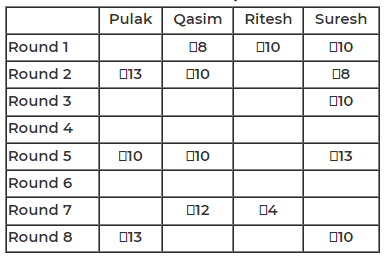
What BEST can be said about the amount of money that Ritesh had with him at the end of Round 8?
Video Explanation

What BEST can be said about the amount of money that Pulak had with him at the end of Round 6?
Video Explanation

How much money (in ₹) did Ritesh have at the end of Round 4?
Video Explanation

How many games were played with a bet of ₹2?
Video Explanation

Which of the following pairings was made in Round 5?
Video Explanation

In 2000, what was the ratio of the number of dead males to dead females among those being tracked?
Video Explanation

How many people who were being tracked and who were between 30 and 40 years of age in 1980 survived until 2010?
Video Explanation

Read the following information carefully, analyze it, and answer the question based on it.
All the first-year students in the computer science (CS) department in a university take both the courses (i) AI and (ii) ML. Students from other departments (non-CS students) can also take one of these two courses, but not both. Students who fail in a course get an F grade; others pass and are awarded A or B or C grades depending on their performance. The following are some additional facts about the number of students who took these two courses this year and the grades they obtained.
1. The numbers of non-CS students who took AI and ML were in the ratio 2 : 5.
2. The number of non-CS students who took either AI or ML was equal to the number of CS students.
3. The numbers of non-CS students who failed in the two courses were the same and their total is equal to the number of CS students who got a C grade in ML.
4. In both the courses, 50% of the students who passed got a B grade. But, while the numbers of students who got A and C grades were the same for AI, they were in the ratio 3 : 2 for ML.
5. No CS student failed in AI, while no non-CS student got an A grade in AI.
6. The numbers of CS students who got A, B and C grades respectively in AI were in the ratio 3 : 5 : 2, while in ML the ratio was 4 : 5 : 2.
7. The ratio of the total number of non-CS students failing in one of the two courses to the number of CS students failing in one of the two courses was 3 : 1.
8. 30 students failed in ML.
How many CS students failed in ML?
Video Explanation

How many non-CS students got A grade in ML?
Video Explanation

How many CS students failed in ML?
Video Explanation

How many non-CS students got A grade in ML?
Video Explanation

Read the following information carefully, analyze it, and answer the question based on it.
Anjali, Bipasha, and Chitra visited an entertainment park that has four rides. Each ride lasts one hour and can accommodate one visitor at one point. All rides begin at 9 am and must be completed by 5 pm except for Ride-3, for which the last ride has to be completed by 1 pm. Ride gates open every 30 minutes, e.g. 10 am, 10:30 am, and so on. Whenever a ride gate opens, and there is no visitor inside, the first visitor waiting in the queue buys the ticket just before taking the ride. The ticket prices are Rs. 20, Rs. 50, Rs. 30 and Rs. 40 for Rides 1 to 4, respectively. Each of the three visitors took at least one ride and did not necessarily take all rides. None of them took the same ride more than once. The movement time from one ride to another is negligible, and a visitor leaves the ride immediately after the completion of the ride. No one takes a break inside the park unless mentioned explicitly.
The following information is also known.
1. Chitra never waited in the queue and completed her visit by 11 am after spending Rs. 50 to pay for the ticket(s).
2. Anjali took Ride-1 at 11 am after waiting for 30 mins for Chitra to complete it. It was the only ride where Anjali waited.
3. Bipasha began her first of three rides at 11:30 am. All three visitors incurred the same amount of ticket expense by 12:15 pm.
4. The last ride taken by Anjali and Bipasha was the same, where Bipasha waited 30 mins for Anjali to complete her ride. Before standing in the queue for that ride, Bipasha took a 1-hour coffee break after completing her previous ride.
What was the total amount spent on tickets (in Rs.) by Bipasha?
Video Explanation

Which were all the rides that Anjali completed by 2:00 pm?
Video Explanation

How many rides did Anjali and Chitra take in total?
Video Explanation

What was the total amount spent on tickets (in Rs.) by Anjali?
Video Explanation

What was the total amount spent on tickets (in Rs.) by Bipasha?
Video Explanation

Which were all the rides that Anjali completed by 2:00 pm?
Video Explanation

How many rides did Anjali and Chitra take in total?
Video Explanation

What was the total amount spent on tickets (in Rs.) by Anjali?
Video Explanation

The lengths of all four sides of a quadrilateral are integer valued. If three of its sides are of length 1 cm, 2 cm and 4 cm, then the total number of possible lengths of the fourth side is
Video Explanation

Two ships are approaching a port along straight routes at constant speeds. Initially, the two ships and the port formed an equilateral triangle with sides of length 24 km. When the slower ship travelled 8 km, the triangle formed by the new positions of the two ships and the port became right-angled. When the faster ship reaches the port, the distance, in km, between the other ship and the port will be
Video Explanation

A donation box can receive only cheques of ₹100, ₹250, and ₹500. On one good day, the donation box was found to contain exactly 100 cheques amounting to a total sum of ₹15250. Then, the maximum possible number of cheques of ₹500 that the donation box may have contained, is
Video Explanation

Previous year papers
2023
2022
2021
2020
2019
2018

